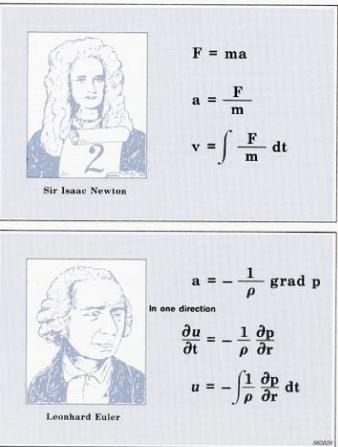|
The Euler Equation: Finding the Particle Velocity
Sound intensity is the time-averaged product of the pressure and particle velocity. A single microphone can measure pressure -- this is not a problem. But measuring particle velocity is not as simple. The particle velocity, however, can be related to thepressure gradient (the rate at which the instantaneous pressure changes with distance) with the linearized Euler equation. With this equation, it is possible to measure this pressure gradient with two closely spaced microphones and relate it to particle velocity.
Euler's equation is essentially Newton's second law applied to a fluid. Newton's Second Law relates the acceleration given to a mass to the force acting on it. If we know the force and the mass we can find the acceleration and then integrate it with respect to time to find the velocity.
With Euler's equation it is the pressuregradientthat accelerates a fluid of densityp.With knowledge of the pressure gradient and the density of the fluid, the particle acceleration can be calculated. Integrating the acceleration signal then gives the particle velocity. (from Bruel & Kjar) |
 |


